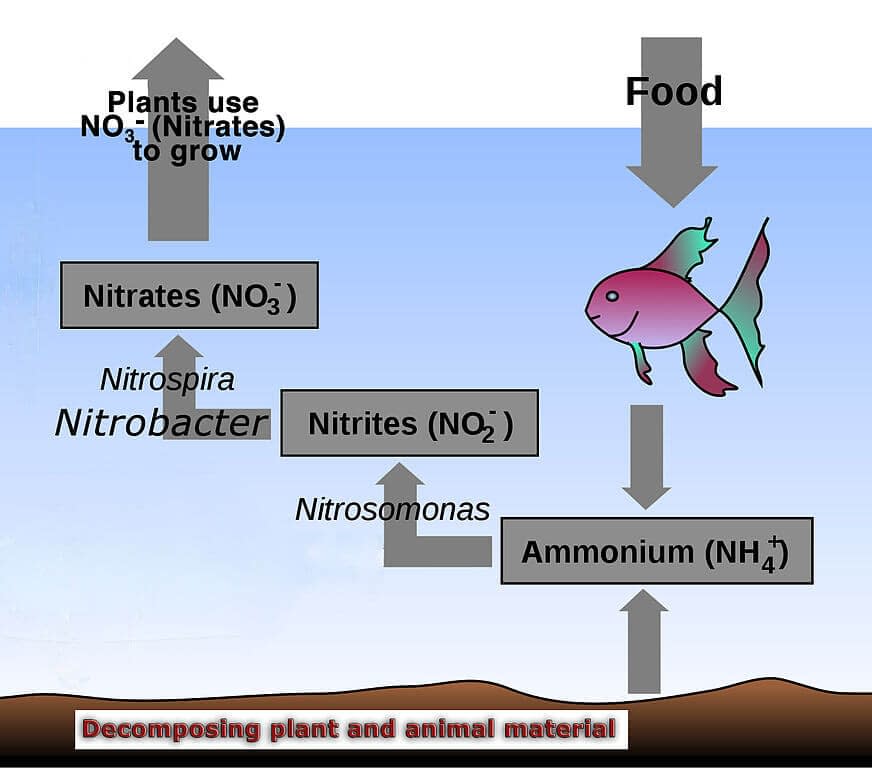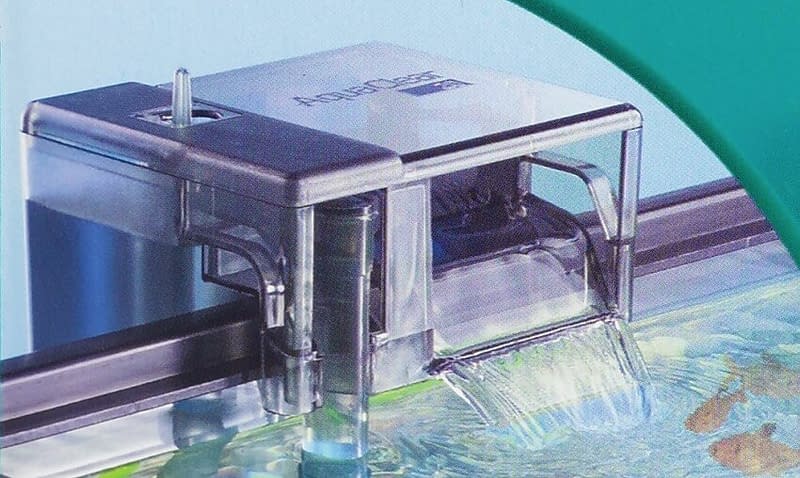Sharing is caring!
There are 3 main components to aquarium filtration that all work in sync to provide a safe and clean environment for your fish. They each have their different purposes so it’s best to understand them all. I’ll go over all 3 and explain their uses, purposes, and the roles that they play in keeping a healthy tank. The 3 types of filtration are:
- Mechanical
- Biological
- Chemical
Mechanical filtration
Mechanical filtration is your first line of defense. This is what’s responsible for filtering out any debris or solid waste that enters your filter. As water enters the filter, either through suction or through an overflow, it’s forced to flow through your filter. For this reason, you want your mechanical filtration to be first in the water flow to prevent any solids from getting trapped in any secondary filters.
Mechanical filtration can come in the form of foam, sponge, pads or even various types of netting. Depending on your needs they are all available in different grades of coarseness. The finer the material the fewer particles will pass through. However, the more waste or debris your filter catches the faster it will become dirty or clogged and require cleaning. For this reason, many hobbyists use a multi-stage filter going from coarse to fine. Obviously, the more “stuff” we remove from the water column with a filter, the less that gets sent back into your tank.
Biological filtration
This is where all the real magic happens. Fish waste, uneaten food, and decaying plant matter all produce ammonia. Ammonia is poison to your fish and must be removed. This is accomplished by bacteria that live in your tank. Don’t worry, this bacterium is beneficial and highly desirable to be in your tank.

When ammonia is present a bacterium called Nitrosomonas will start to form. Nitrosomonas oxidizes ammonia and puts off a byproduct called nitrites. Nitrites are also poisonous to your fish but less than that of ammonia. In the presence of nitrites, a bacterium called Nitrobacter will form which converts nitrites into nitrates. Nitrates are significantly less poisonous to your fish and are removed from your tank by doing water changes.
PRO-TIP: Plants eat nitrates. Having a well-planted tank will help reduce the amount of nitrates present.
All this bacterium is wonderful and all but it needs a place to reside in your tank. Yes, this beneficial bacterium will live in your substrate and on any decorations you have, but not in great enough numbers to be effective at its job. The main place the bacteria will live is in your filter media. This is why having a multi-stage filtration system is so beneficial. While stage one will remove the solids, your finer grade filters can hold all the bacteria.
Chemical
Chemical filtration is one of those that not all hobbyists agree on. Some use it as a full-time filter while others use it to remedy an exacting issue. I’m with the latter as I don’t use it full-time, I do however always have some available. The most common form of chemical filtration is with activated carbon. Activated carbon is super absorbent and has a huge surface area in relation to weight, one gram has over 32,000 square feet of surface area. Because of this, activated carbon will remove even the finest of particles from your tank.
Here are the benefits and why some hobbyists use it all the time. It will make your water look perfectly clear. The carbon will remove anything from your water column that may be affecting the clarity, to include tannins being put off by driftwood. It will also remove any foul odors from your tank.
That’s a good thing, right? Well, yes and no. With the exception of blackwater aquariums or those that enjoy some level of tannins, we all want our tanks to look and smell amazing. The problem with using activated carbon though is that you may not learn why your tank is having clarity issues or foul smells. I always find that it’s better to know and to correct the problem than to hide its existence with this type of filtration. Carbon can act as a band-aid to an issue while the wound festers underneath. Sorry for that image.
So, when is it good to use? For removing medication. If your aquarium ever gets afflicted with a sickness or disease, you’ll likely add in a chemical medication to help your fish. When the medications have run its course, and hopefully all your fish are better, it doesn’t just disappear, in steps your chemical filtration. Activated carbon is amazing at removing these chemicals from your water, and fast. It’s for this reason that I keep some on hand. The other reason that I opt out of using chemical filtration is that it takes up space in my filter that can otherwise be used by, far more important, additional filter media for my bacteria to live.
If water clarity is of concern to you there are other options out there such as filter floss. All this is, is a super fine filter that will trap most of the fine particles present without the need for carbon. I personally use a polyester fiberfill batting that can be cut to size. This is a far cheaper alternative to what may be available at your pet store and can be found in most hobby stores and everywhere online. Just be sure to select one that does not have any added chemicals or perfumes.
Tips on cleaning your filter media
Never clean your filters with tap water. This will quickly kill off any of the beneficial bacteria that may be living on it. Whenever you’re doing a water change, try to keep a bucket of tank water aside and clean your filters by hand in this bucket and then reuse the filter. By cleaning your filter in tank water, you can remove a lot of the solid debris without killing off the bacteria. The only time you need to replace a filter is when it’s either falling apart or no longer gets clean. Pet stores try to make you think that you need to keep buying their products and to constantly replace your filters. This is not only untrue but can also be detrimental to your tank when you’re throwing away your biological filtration. If you’re using multiple filters and they are starting to reach their end of life, try to replace them one at a time so that you always have one running with the bacteria.
Filtering your aquarium water is vitally important for the health and well-being of your fish. All three types, mechanical, biological, and chemical work in unison with each other to keep your water as clean as possible. Even with the perfect filtration system, you’ll still have to do your part in keeping them clean and changing the water.
Sharing is caring!




